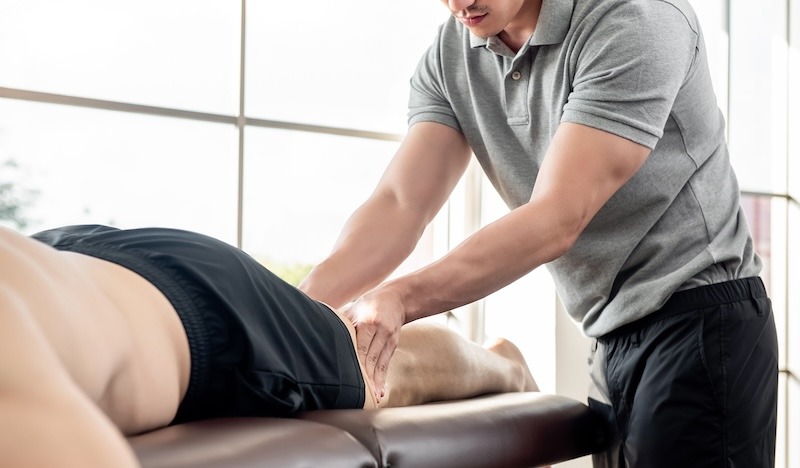Lymphedema, characterized by swelling due to a compromised lymphatic system, can present significant challenges for those affected. Properly fitted compression garments can provide relief and help manage symptoms, but they are just one component of a comprehensive treatment plan for lymphedema.
Combining compression garments with complementary therapies offers patients a holistic approach to managing their condition. These therapies can also enhance the effectiveness of compression garments when they are used as prescribed after treatments.
Understanding Complementary Therapies
Treatments for lymphedema encompass a range of modalities to promote overall well-being and alleviate symptoms. These therapies target various aspects of the condition, including fluid retention, inflammation, and tissue fibrosis, to complement the effects of compression garments.
Manual Lymphatic Drainage (MLD)
Manual Lymphatic Drainage (MLD) is a specialized massage technique performed by trained lymphedema therapists to stimulate lymphatic flow and reduce swelling in affected areas. When combined with compression garments, MLD can help optimize lymphedema management by facilitating the removal of excess fluid and promoting tissue healing. Regular MLD sessions may be recommended as part of a comprehensive treatment plan to maintain lymphatic function and prevent disease progression.
Pneumatic Compression Devices
Pneumatic compression devices utilize sequential compression to mimic the natural pumping action of muscles, aiding in lymphatic drainage and reducing swelling. These devices can be used in combination with compression garments to provide additional support and enhance fluid movement in the affected limbs. By promoting lymphatic circulation, pneumatic compression therapy complements the effects of compression garments, particularly in cases where manual lymphatic drainage may not be feasible.
Complete Decongestive Therapy (CDT)
Complete Decongestive Therapy (CDT) is a comprehensive treatment approach that effectively manages lymphedema by combining manual lymphatic drainage, compression therapy, exercise, and skincare. By addressing both the underlying causes and symptoms of lymphedema, CDT aims to reduce swelling, improve mobility, and enhance overall quality of life. Compression garments are an integral component of CDT, working in tandem with other therapies to achieve optimal results.
Exercise and Physical Activity
Regular exercise plays a crucial role in lymphedema management by promoting lymphatic flow, muscle pump activity, and overall circulation. Low-impact activities such as walking, swimming, and yoga can help reduce swelling and improve mobility without exacerbating symptoms. Physical therapy programs tailored to the individual’s needs can also incorporate targeted exercises to enhance lymphatic drainage and strengthen the affected limbs.
Compression Garments are Key to Symptom Management ~ Connect with Compression Care for a Fitting
Properly fitted compression garments are the cornerstone of a lymphedema treatment plan, providing support and compression to reduce swelling and promote lymphatic drainage. In combination with the complementary physical therapies prescribed by a doctor, compression garments can help improve the quality of life for lymphedema patients.
Compression Care is here to provide support if you or a loved one is struggling with lymphedema or lipedema. Call or text (615) 583-2273 or email us at hello@compressioncare.com to let us know how we can help!

